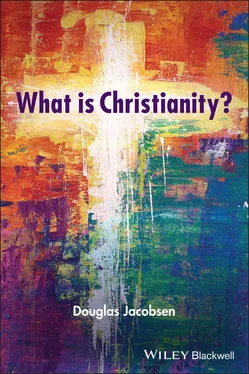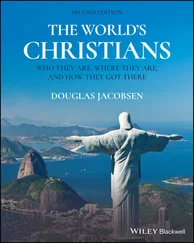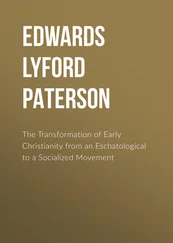The religion called Christianity did not spring into existence with its identity already fully developed and finalized. At first, Christians did not even know what to call themselves. The New Testament book of Acts refers to them simply as “followers of the Way” and infers that the term “Christians” was first used by others, possibly as a derogatory means of distinguishing disciples of Christ from other kinds of Jews. What seems clear is that Jesus had a powerful impact on his closest friends and associates and that those allies were able to communicate their enthusiasm about Jesus to others. In a sense, Christianity began as something like a fan club for Jesus. This is not meant as criticism, but merely as description. A fan club is held together by its devotion to a person, not by the ideas or ideals that demarcate its identity. Earliest Christianity was indeed something like a fan club: it was a movement of devotion to Jesus long before it developed a clear and distinct sense of its own religious identity.
Religious identity is a group phenomenon. Everyone has their own spiritual sense of who they are, but religions are bigger than any one individual. A religion is a community that a person joins, or is born into, that connects participants with the divine (or more generally with “the transcendent”) and provides guidance for the journey of life. Religions are not meant to be easily modified to conform to one’s wishes; indeed, few people want their religion to be pliable and undemanding. Religions are instead expected to provide a standard to which individuals conform, an ideal worthy of utmost human effort. People change their lives to fit their religion, not the other way around.
Religious identity consists of the beliefs, actions, values, personality traits, affectivities, and organizational structures that a religious community champions and shares with others. This does not mean that every member of the group agrees about everything. No group of people is ever that uniform. What it does mean is that members of the group hold enough things more-or-less in common that they feel a sense of belonging together. They recognize each other as family. They understand how people in the group think and know how members of the group feel about themselves, about others, and about the things they hold sacred.
When Christianity first began, it had not yet figured out its own religious identity. Christians weren’t fully sure what they believed or didn’t believe as a group, and there were no fixed rules about who belonged or didn’t belong. There was as yet neither a New Testament nor a church hierarchy to supply answers. They had the Hebrew scriptures, but they were not quite sure how to interpret them; for that matter, they were not sure if Christianity was a new kind of Judaism or something else. As a group, Christians simply had not spent enough time together to develop a corporate personality, and they had no idea how to institutionally organize themselves or even if institutionalizing the movement was a proper goal. They all loved Jesus, but Christianity was not yet a religion. It was still just a loosely connected social movement of people on “the way.”
It would be wrong to see these early Christians as totally adrift. That is clearly not accurate. Everyone agreed that Jesus was their guide and teacher, and they were all quite certain that a new age of divine blessing was dawning, but the movement was surprisingly open-ended. Lots of rules, regulations, and practices would be implemented later, and once they were in place Christians often treated them as if they had always been essential elements of the movement, but most had not. When Christianity began, it was a movement in search mode. Christians possessed a handful of ideas and inclinations that they were spiritually willing to bet their lives on, but they had not yet deciphered what it all meant. Figuring that out would literally take centuries, and there would always be multiple answers rather than just one. Instead of ending up with just one uniform and ubiquitous Christian identity, Christianity ended up with a number of different but overlapping and interrelated identities. These varied packages of Christian beliefs and practices are called traditions, and this chapter recounts how the original fledgling Christian movement slowly evolved over five or six hundred years to become an organized religion housed in multiple different traditions.
The Jewish Roots of Christianity
Jesus was a Jew, and Judaism is the source of many of the ideas and commitments that still characterize Christianity today. While the precise origins of Judaism are largely lost in the mists of history, the Hebrew scriptures assert that the Jewish people were called into existence by God and given a special role in the human story. The Hebrew scriptures include a vivid account of exodus from Egypt and conquest of Palestine, but the archaeological records from this time period (thirteenth century bce ) reflect a much slower and less dramatic progression of events that eventually gave birth to Israel and to Jewish religious consciousness. Whatever the process, it seems clear that by about 1000 bce an Israelite kingdom had been established in Palestine, with its religious life focused on rituals performed at the Temple in Jerusalem.
In 587 bce, Palestine was conquered by the powerful Babylonian emperor Nebuchadnezzar II. Many Jews were exiled to Persia (now Iraq and Iran), and the Jerusalem Temple was destroyed. Without a temple, Jews developed other mechanisms for preserving their faith, most notably the synagogue , a place where Jews could gather to pray and to discuss religious and moral matters. Jews started returning to Palestine around 540 BCE and promptly rebuilt the Jerusalem Temple, but synagogues remained in use as local meeting places for Jews wherever they lived. Several different dynasties conquered and ruled post-exile Palestine, but in the 140s bce a Jewish state was reestablished in the region. That kingdom was of relatively short duration; it was subsumed into the Roman Empire in 63 bce. From that juncture until 1948, Jews had no land they could call their own.
By the time of the Roman occupation, assorted groups of Jews had developed their own different ways of making sense of God, themselves, and their historical experience. Prominent Jewish sub-groups included the Pharisees, who stressed the law and personal piety; the Sadducees, who emphasized traditional temple worship; the Zealots, who were violently opposed to Roman rule; and the Qumran community that assumed the end of the world was near and that a final battle between good and evil was about to commence. The Samaritans, another quasi-Jewish group, claimed descent from two of Israel’s ancient tribes, Ephraim and Manasseh. In addition, an increasing number of Gentiles (non-Jews) were calling themselves God-fearers and adopting many of Judaism’s ideas and values without formally becoming Jews themselves.
This was the complex world of Jewish faith into which Jesus was born and which shaped the early Christian movement. Christianity retained many of the basic ideas and practices of Judaism. The synagogue morphed into the church, and the diversity of perspectives within Judaism prepared the way for the diversity of beliefs and practices that soon came to characterize the early Christian community. Imbedded in the matrix of first-century Judaism, Christianity emerged as a new and distinct religious movement led by a backcountry prophet named Jesus of Nazareth.
Jesus was an unlikely leader. Neither a priest nor a scholar, Jesus lived his first thirty years in relative obscurity as the son of Mary and her husband Joseph, a carpenter in the small town of Nazareth in the region known as Galilee. Then, for just a few years before he was killed, he took on the role of a wandering Jewish prophet and teacher, at first in the rural region where he had been raised and later for a very short time in Jerusalem.
Читать дальше












